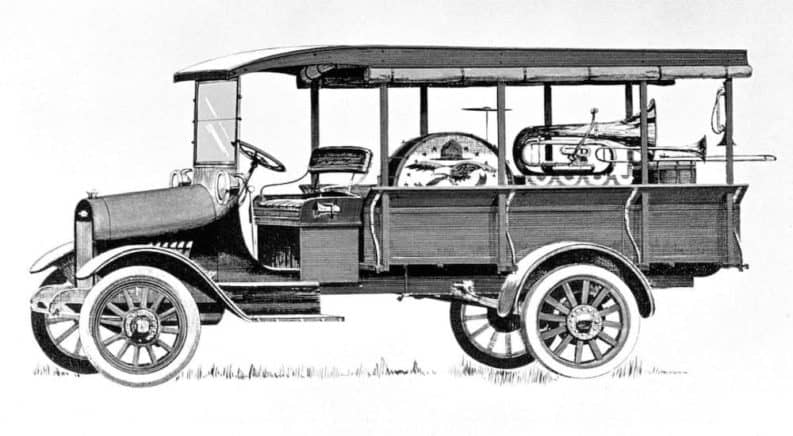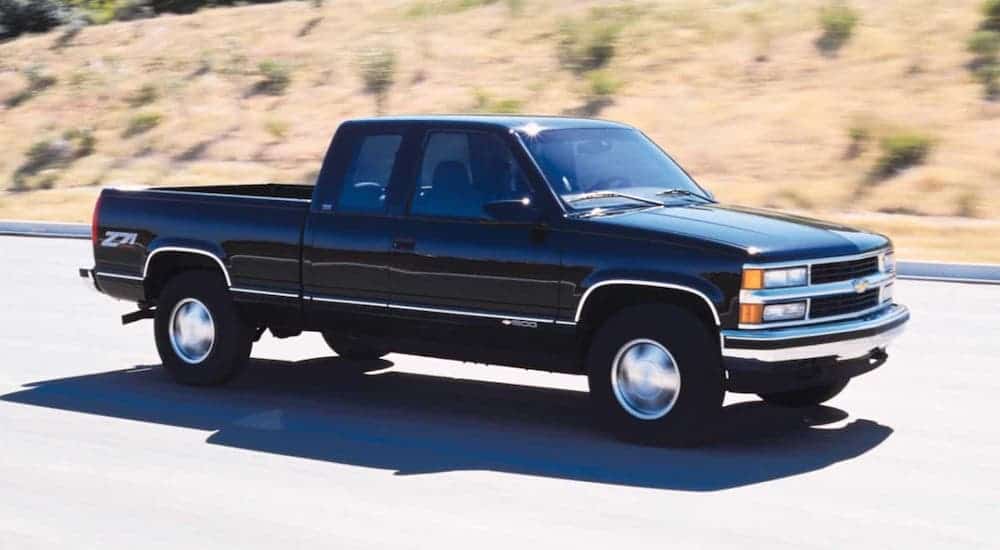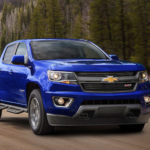Trucks are an indelible part of American history, beginning with the shift from horse-drawn carriages and wagons to work trucks, to the present-day love affair with pickups as vehicles bought for recreation as much as for work. Trends in RV living, off-road recreation, and even racing are all part of truck life today, but when did trucks become so tied to American life? If you have ever used Chevy trucks for anything, you may already know that the brand has made trucks an integral part of our daily lives.
Over the last 100 years, trucks started with an idea to make work life easier and developed with engineering and design to become part of American culture. Chevrolet has been a fixture of truck culture right along with other well-known manufacturers like Ford and Ram. In addition, Chevy shares in the design and development of many classic and well-loved favorites over the last century.
1910-1920
It all began in 1918 with the Chevrolet One-Ton. Over 100 years ago, Chevy merged with GM to become one of the many vehicle manufacturers to be collected under the GM umbrella, and with that merger came several advances and shared creations. GM has long been a strong builder of trucks, with many heavy-duty and work trucks being GMC’s bread and butter. When looking back to Chevy’s first official truck, you’ll notice that the One-Ton was built for work.
The Chevrolet One-Ton served as mainly the cab, or cowl, on the front, with a chassis that could come with or without the poles to hang a cloth cover canopy over the back end. Work trucks like the One-Ton were popular as a means of transport for those who wanted to sell their wares. Having a powered vehicle to carry a product changed the landscape of sales, making it easier to haul loads longer distances.
1920-1930
During this decade, Chevy built the International Series AC Light Duty truck, the first of its kind to utilize an engine powered by six cylinders. It also featured the earliest wheels made of steel instead of wood, another industry shift. These trucks were 117 inches long, with a bed of 68 inches. With an enclosed cabin and a box-like bed, this type of truck became more of the style that inspired what most truck owners drive today, where the One-Ton was more of what would become the basis for a truly heavy-duty truck like those used for industry.
1930-1940
In a short time, Chevrolet began developing early versions of trucks made more palatable for home and family use by utilizing designs with color and comfort in mind. With the advent of an enclosed cabin to keep occupants protected from outdoor elements came a slew of creative ways to make trucks more interesting for buyers to want to own. This encouraged the Chevrolet Half-Ton truck to be born into the early stages of defined sales for trucks and cars as separate entities. Now in its infancy, the truck craze would soon become a booming business.
1940-1950
This is the decade in which the real romance of trucks and American life became a permanent fixture. The 3100 Series, also known as “Advance Design,” became the basis for all truck chassis of the future, including the future Suburban and panel trucks. In this decade, Chevy rose to the top of truck sales in 1947 in the US and held that record until 1955. It’s also the decade in which the grille design changed from vertical to horizontal and started the trend for Chevy’s iconic front end appearance. This truck series was built larger and stronger than the last, and also featured the first heaters and radios in trucks. Again, interior comfort became a focus as time went on, with more and more Americans desiring trucks and utilizing them as family vehicles outside of work life.
1950-1960
With appeal for family ownership of trucks growing, Chevrolet banked on continuing to develop creature comforts into truck designs. A perfect example of this is the 3124 Series Cameo Carrier, nicknamed the “executive truck” due to its upgraded interior and exterior appearance. Chevy developers took inspiration from car seating to make the ride more comfortable, then made the decision to offer two-tone paint and a wrap-around front windshield to give this truck a real sense of luxury-inspired and influenced by the popular Corvette of its day. Interestingly, the Cameo Carrier was the first fleetside truck to be built, and it took executives quite a while to deliberate the building of this new design. Fortunately, it was a hit.
1960-1970
1960 is the year the first C/K series trucks rolled out for sale, a series shared by both Chevy and GMC for several decades. While Chevy and GMC have long been tied in truck history, this particular series of trucks is well-loved and revered as a classic. With this new series of trucks, Chevy offered not only more interior conveniences and comforts for the cabin but engine choices as well. Buyers could also choose between rear-wheel and four-wheel drive. New types of metallic paint were also utilized, allowing for details to be more visible. This series of trucks became the modern-day equivalent of the GMC Sierra and the Chevy Silverado.
1970-1980
Even though Chevy innovated trucks for family use, the manufacturer still recognized the need for work use, too. In 1973, the One-Ton Dually Crew Cab was marketed for heavy-duty use, while still being touted as recreational. The design of the crew cab allowed for six passengers and increased the capability of the truck dramatically. Aside from new engineering in aerodynamics, this truck also featured the first truck to have a radio antenna integrated into the windshield.
1980-1990
Despite so much success with trucks, Chevy never rested on its laurels. Innovation was the name of the game, and in 1988 Chevy released yet another innovative truck in the long-running C/K Series, now in its fourth generation. It seems ho-hum to have driving modes on cars today, but the Chevrolet C/K 1500 was the first to offer the option of switching between two and four-wheel drive. Continuing in the vein of maintaining comfort for passengers, all the fourth-gen C/K Series trucks came with independent front suspensions to improve ride quality and control.
1990-2000
Approaching the end of the millennium, Chevy made the decision to begin phasing out the namesake of the C/K truck series. In 1999, Chevy unleashed the new Silverado, known previously as a trim level by that name. It became the basis for the light-duty trucks like Suburbans, which shared the same platform. Meanwhile, GMC released the new Sierra, while both manufacturers continued to offer the C/K line of trucks for a short time before finally ending their reign in Chevy truck history.
2000-2010
With the second generation of Silverado trucks, Chevy’s newest innovations became focused on efficiency and aerodynamics but still delivered power and versatility. Silverado trucks, just like their C/K Series forebearers, remained highly customizable with a wide range of features to build a truck to suit whatever work or recreational activities a buyer wanted.
2010-2020
In 2014, the Silverado of that year utilized an engine that was a direct descendant of the engine used in the original 1955 C/K Series trucks, which in 1955 was a powerful small-block V8 that put out 180 horsepower. The 2014 Silverado came to market with almost double that horsepower with a 5.3-liter V8, a far cry from its origins. To celebrate a century of truck history, Chevy also offered a Centennial Edition of both the Silverado and the Colorado, sealing a century of truck sales that topped 85 million in 2018.
A Lasting Legacy
Since Chevy was founded in 1911 in Detroit, Michigan, it has maintained strong business decisions in building trucks Americans associate with the history of specific eras. Whether it’s the early work trucks or the more cushy family-oriented trucks of the 50s and 60s and right up to the Silverado of today, Chevy has been in the thick of building trucks for as long as trucks have been part of American life. The history of trucks can’t be written without Chevy, and after a century of truck innovations, it remains as relevant today as the first truck to be built by early designers.






